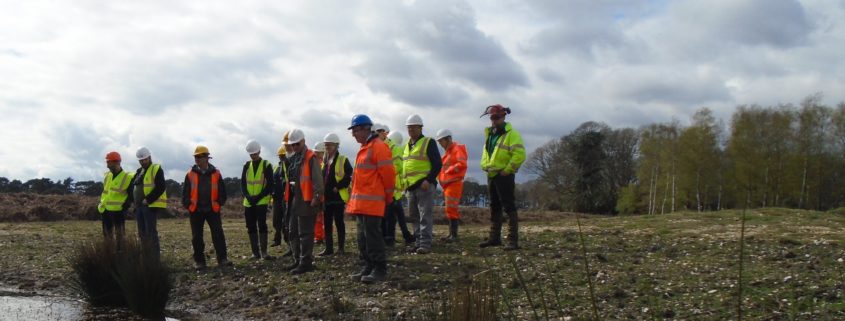Nature After Minerals Event at Binnegar Quarry
As part of a Nature After Minerals (NAM) event looking at invertebrate and early pioneer species conservation through biodiversity-led minerals restoration, Raymond Brown recently welcomed a group of minerals restoration stakeholders to Binnegar Quarry, in Dorset.
The morning session of the event considered how, in working to create priority habitats to link up with local fragmented habitats on a landscape scale, early to mid-term succession habitat evolution can also help support important pioneer species that are vital for a healthy ecosystem.
In the afternoon, event attendees from the minerals industry, local authorities, statutory bodies, minerals planners and ecological and planning consultants took part in a site visit to the quarry, where Raymond Brown employees and ecological consultants were on hand to showcase the work being undertaken on the site’s 8ha Blue Area.
This area, which is being restored with nature firmly in mind, is helping provide a refuge for invertebrates and pioneer species in the early stages of its restoration to heathland, interspersed with ephemeral ponds and bare scrapes.
Rob Westell, Raymond Brown’s Estates and Planning Director, commented: ‘We were delighted to host our second NAM event at Binnegar Quarry, to demonstrate the restoration of the site.
‘Lowland heathland is a top priority habitat in Dorset, and the site, which contains some heathland, adjoins a heathland Site of Special Scientific Interest (SSSI), benefiting priority butterfly, reptile and bird species, and facilitating their colonization.’
NAM’s events and communications officer, Debra Royal, said: ‘At a time when research shows nature is in trouble and many species are in rapid decline, biodiversity-led minerals restoration can help. We were delighted to have an opportunity to visit Binnegar Quarry to view yet another instance of minerals restoration work helping nature on the ground.’


